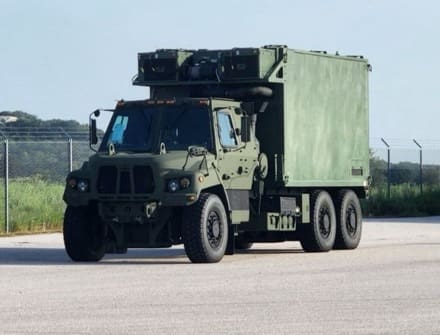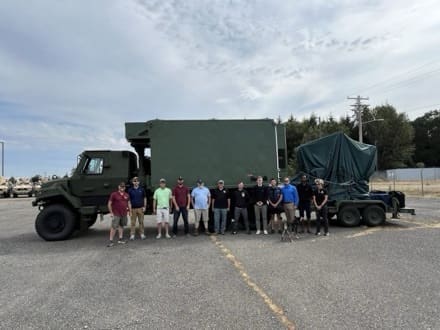JOINT BASE LEWIS MCCHORD, Wash. — The Army’s need for a next generation intelligence, surveillance and reconnaissance system that rapidly processes sensor data from space, high altitude, aerial and terrestrial layers to provide real-time intelligence support for targeting and situational awareness is the impetus behind Project Manager Intelligence Systems and Analytics’ delivery of the Army’s first Tactical Intelligence Targeting Access Node, or TITAN, ground station prototype to Joint Base Lewis-McChord. This milestone marks a significant advancement in the Army’s capabilities to support multi-domain operations.

“Delivering the first TITAN prototype to JBLM is a pivotal step in enhancing our warfighters’ capabilities,” said Col. Chris Anderson, PM IS&A. “TITAN provides game-changing technologies that revolutionize how we collect, process, and disseminate intelligence across the battlefield, giving us a decisive edge.”
The system which leverages cutting-edge artificial intelligence and machine learning technologies is a ground station that will significantly reduce the sensor-to-shooter timeline, enabling faster and more accurate decision-making in complex operational environments. This delivery is part of a broader effort to equip the Army with advanced intelligence, surveillance and reconnaissance capabilities that support the rapid and effective execution of multi-domain operations.
Product Director Intelligence Systems, Rich Licata said, “We are proud of the successful delivery of the first TITAN prototype. We look forward to continuing our collaboration with our partners in the development efforts to refine and expand these capabilities, ensuring our forces remain at the forefront of technological innovation.”

The prototype delivered to JBLM is one of ten being developed. These prototypes will undergo rigorous testing and evaluation to ensure they meet the operational needs and will be used to refine the system through Soldier feedback obtained from a disciplined user-centered design process including extensive unit use of the prototypes.
“We are thrilled to move into the next phase of delivering these revolutionary capabilities to the Army,” added Anderson. “The feedback from our Soldiers will be invaluable in refining and enhancing the TITAN system to meet the demands of modern warfare.”
By Larry Glidewell

